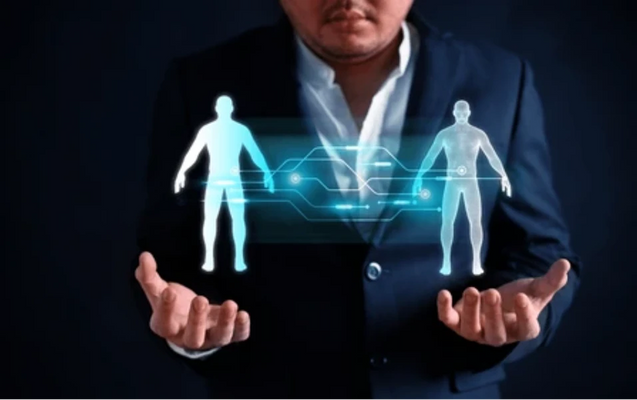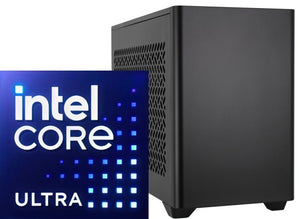Digital Twins in Healthcare: Transforming Medicine with Virtual Innovation

The world of healthcare is shifting rapidly, fueled by technology that once belonged only in the realm of science fiction. Among the most groundbreaking of these innovations is the concept of digital twins in healthcare. A digital twin is a virtual replica of a physical object or system, and in the context of medicine, this could mean replicating a patient, an organ, a medical device, or even an entire hospital. Unlike traditional simulations, digital twins use real-time data, AI, and machine learning to mirror and predict real-world conditions with remarkable accuracy.
This technology is not developing in isolation. It belongs to a much larger movement where the virtual world is taking root across every industry, from entertainment to manufacturing, and now healthcare. Just as ARwall has pioneered immersive AR and virtual production technologies in cinema and business, digital twins in healthcare are reshaping the way medical professionals approach diagnosis, treatment, and patient care. Together, these technologies are building a future where the line between the physical and virtual is no longer clear but instead forms a unified ecosystem of opportunities.
What Are Digital Twins in Healthcare?
To understand the potential of digital twins in healthcare, it is essential to break down the concept. A digital twin in medicine is a data-driven, virtual representation of a living system. This could be as specific as an individual patient’s heart or as broad as the daily operations of a hospital. The purpose of this twin is to simulate, predict, and optimize outcomes before they happen in the real world.
For example, imagine a patient scheduled for a complex heart surgery. With a digital twin, surgeons can test various approaches on the patient’s virtual heart, assess risks, and select the most effective method. In drug development, pharmaceutical researchers can model how different compounds interact with digital patients, saving years of time and billions of dollars.
In simpler terms, digital twins allow healthcare to move from a reactive approach — where doctors respond after problems occur — to a proactive and predictive approach, where risks are minimized before they become emergencies.

Types of Digital Twins in Healthcare
The concept of a digital twin may sound singular, but it actually branches into different types, each serving unique roles in the healthcare ecosystem.
One important category is the patient-specific digital twin. These twins create a virtual model of an individual patient using their genetic information, imaging data, lifestyle habits, and medical history. They allow doctors to deliver hyper-personalized care, essentially making medicine custom-tailored rather than one-size-fits-all.
Another form is the organ or system twin, which replicates critical body parts like the heart, lungs, or brain. These are widely used in surgical planning and medical research. A digital twin of a lung, for instance, can help physicians predict how it will respond to a new therapy without endangering the patient.
Hospitals and health systems also use process digital twins to model workflows and optimize efficiency. These models can predict patient flow, resource needs, and even identify bottlenecks in emergency departments. Similarly, device digital twins are increasingly important as medical equipment grows more complex. By virtually testing implants, pacemakers, or prosthetics before they are fitted, clinicians can improve safety and functionality.
Lastly, there are ecosystem-level digital twins, which simulate entire healthcare environments. These models are especially valuable for public health scenarios such as pandemic planning, allowing governments and hospitals to anticipate and prepare for crises.
Applications of Digital Twins in Healthcare
The applications of digital twins in healthcare are as wide-ranging as they are impactful. One of the most compelling areas is personalized medicine. With patient-specific twins, treatments can be designed to suit individual needs, reducing side effects and improving success rates. This has revolutionary implications for oncology, cardiology, and chronic disease management.
In the realm of surgery, digital twins allow surgeons to rehearse procedures in a risk-free environment. This not only reduces the chances of complications but also boosts the confidence and preparedness of the surgical team. For chronic conditions such as diabetes or heart disease, digital twins act as ongoing monitors, offering insights into how lifestyle changes or new medications might affect long-term health.
Another transformative application is in drug development. Traditional clinical trials are expensive, lengthy, and often fail because the drugs react unpredictably in humans. Digital twins help bridge this gap by simulating patient responses, enabling pharmaceutical companies to weed out ineffective treatments earlier in the process. This speeds up development and lowers costs significantly.
Even at the organizational level, hospitals use digital twins to improve management and operations. They can predict peak patient inflows, optimize staffing, and allocate resources more efficiently. Medical schools are also integrating digital twins into training programs, giving students a chance to interact with lifelike patient simulations instead of relying solely on cadavers or textbooks.

Benefits of Digital Twins in Healthcare
The benefits of digital twins in healthcare extend beyond the obvious technical advantages. At the patient level, they empower individuals to be more involved in their care. Seeing a virtual model of their condition makes treatments more tangible and easier to understand, increasing trust between patients and providers.
From a clinical perspective, digital twins reduce trial and error. Surgeons no longer need to rely only on experience and intuition; they can test procedures in virtual reality before ever touching the patient. This drastically lowers the risk of errors, complications, and costly revisions.
Financially, digital twins help reduce costs across the board. Drug development is faster and cheaper, hospital processes are streamlined, and surgeries are more successful on the first attempt. In an era where healthcare costs are spiraling, this efficiency is not just welcome — it is necessary.
On a global scale, digital twins offer a new way to prepare for public health crises. By simulating disease spread and testing interventions virtually, governments and hospitals can respond more effectively to pandemics, shortages, or emergencies.
Perhaps the greatest benefit is the ability to move toward predictive healthcare. Instead of treating patients once problems arise, doctors can anticipate risks, intervene earlier, and in many cases, prevent diseases altogether.
AI Digital Twins in Healthcare
The rise of AI digital twins in healthcare marks the next leap in this evolution. Artificial intelligence acts as the brain behind the virtual replica, analyzing massive datasets that no human could manage. AI algorithms can process genetic data, medical imaging, lifestyle factors, and real-time monitoring inputs to create highly accurate models of patient health.
What makes AI-powered digital twins particularly powerful is their ability to learn. Unlike static simulations, AI twins adapt over time, improving their accuracy with every new data point. This means they don’t just reflect the patient’s current condition — they evolve alongside the patient, offering continuous insight into future risks and outcomes.
For example, an AI digital twin of a diabetic patient might detect subtle changes in blood sugar patterns that predict complications weeks in advance. Similarly, in oncology, AI models can forecast how a tumor will respond to different therapies, allowing oncologists to choose the most effective option with confidence.
By combining AI with digital twins, healthcare is entering an era where predictive medicine is no longer just a possibility but a practical reality.
Digital Twins in Healthcare Market and Size
The global digital twins in healthcare market is expanding at a pace that reflects the growing demand for personalized, efficient, and predictive medicine. Several market reports forecast that the sector will reach tens of billions of dollars by 2025, with a compound annual growth rate (CAGR) exceeding 20%. This growth is driven by the convergence of several technological trends: artificial intelligence, the Internet of Things (IoT), big data analytics, and cloud computing.
The market expansion is not limited to one region. North America currently leads due to its advanced healthcare infrastructure and high adoption of AI technologies. However, Asia-Pacific is catching up quickly, driven by rising healthcare investments in countries like China and India. Europe, too, is adopting digital twin technologies in clinical trials and hospital management.
Key contributors to this growth are pharmaceutical giants, medical device manufacturers, and healthcare IT providers. For instance, drug companies are already leveraging digital twins to simulate clinical trials virtually, while hospitals are using them to model patient flow and optimize costs. By 2025, digital twins will become a mainstream tool, integrated into most leading healthcare institutions worldwide.
Examples of Digital Twins in Healthcare
While digital twins may sound futuristic, real-world examples prove they are already making a difference.
Siemens Healthineers, for example, has developed a cardiac digital twin that allows doctors to simulate heart function and test different surgical strategies before operating. This minimizes the risks associated with complex heart surgeries. Similarly, Dassault Systèmes has created highly detailed organ models used by researchers to explore new treatment methods.
Another prominent case is Philips, which uses digital twins for hospital-wide simulations. These models help administrators understand patient flow, identify bottlenecks in emergency rooms, and optimize resource allocation. In academic medicine, digital patient twins are increasingly used for medical training, offering lifelike virtual scenarios to prepare students for real clinical challenges.
These examples highlight that digital twins are not theoretical concepts anymore. They are practical tools already embedded in modern healthcare, improving outcomes today while laying the foundation for even more advanced applications in the future.
Ecosystem for Digital Twins in Healthcare
The success of digital twins relies on a collaborative ecosystem. No single organization can implement digital twins alone; instead, it requires the integration of multiple stakeholders.
Healthcare providers, such as hospitals and clinics, are at the center, using digital twins for patient care and management. Technology companies provide the backbone through cloud platforms, AI algorithms, and data analytics tools. Pharmaceutical companies apply the technology to accelerate drug discovery and testing. Medical device manufacturers use it to design and validate new implants or prosthetics virtually before deploying them in patients.
Governments and regulatory authorities also play a crucial role by establishing guidelines to ensure that digital twins are safe, ethical, and compliant with healthcare standards. Lastly, patients themselves are key players in this ecosystem. With the rise of wearable devices and health apps, individuals continuously generate data that feeds into their personal digital twins, making them active participants in their care journey.
This interconnected ecosystem ensures that digital twins do not operate in isolation but rather as part of a broader digital health transformation.

Digital Twins in Healthcare 2025: The Future Outlook
Looking ahead to 2025, the potential of digital twins in healthcare becomes even more exciting. By then, many experts predict that digital twins will evolve into “living twins” — dynamic models updated in real-time by data from wearable devices, smart implants, and continuous monitoring systems.
These living twins will enable doctors to predict and intervene before issues escalate. A patient with heart disease, for instance, might have their twin updated every second with data from a wearable ECG, allowing doctors to detect a dangerous arrhythmia before it becomes life-threatening.
In drug development, digital twins will become an essential part of every clinical trial, significantly reducing the time required to bring new therapies to market. Hospitals will rely heavily on process twins to manage operations more efficiently, cutting down costs and reducing patient wait times.
Education and training will also undergo a transformation. Medical students will no longer just read textbooks or watch videos; they will interact with highly detailed digital patients in immersive environments, making training safer, more effective, and more engaging.
By 2025, digital twins will no longer be optional tools. They will be integral to healthcare systems, shaping everything from individual patient care to global health strategies.
ARwall and the Virtual Healthcare Revolution
While digital twins provide accurate virtual models of patients and processes, the presentation and interaction with these twins require immersive environments. This is where ARwall steps in. Known for its groundbreaking work in virtual production and augmented reality solutions, ARwall creates platforms where these digital twins can be visualized and experienced.
For instance, ARwall’s technology can transform how medical students interact with digital twins. Instead of viewing a flat screen model, they can immerse themselves in a lifelike, three-dimensional space where they can “walk around” a virtual organ or simulate a surgery. This level of immersion deepens understanding and enhances skill-building.
Patients also benefit. With ARwall, they can visualize their digital twin in an interactive environment, helping them understand their conditions better and fostering stronger engagement with their treatment plans. Rehabilitation programs can use ARwall’s immersive experiences to guide patients through physical therapy, making the process more engaging and effective.
The virtual world is expanding across industries, and healthcare is quickly becoming one of its most promising frontiers. By joining hands with ARwall, healthcare organizations can not only adopt digital twins but also unlock their full potential in ways that engage, educate, and transform care delivery.
Conclusion
The rise of digital twins in healthcare represents more than just another technological trend. It signals a fundamental shift in how medicine is practiced, researched, and experienced. By creating highly accurate, data-driven virtual models of patients, organs, and processes, digital twins are making healthcare more personalized, predictive, and cost-effective.
With the market projected to grow rapidly through 2025 and beyond, digital twins are poised to become an integral part of everyday healthcare operations. Examples from leading companies like Siemens, Philips, and Dassault Systèmes already demonstrate the transformative impact these technologies are having today.
Yet the true power of digital twins will be realized when they are combined with immersive platforms like those created by ARwall. Together, they will redefine how we diagnose, treat, and educate in medicine, turning the virtual world into a vital extension of the physical one.
The message is clear: the future of healthcare is digital, immersive, and collaborative. Now is the time to explore opportunities with ARwall and step into the new era of virtual healthcare innovation.
FAQs
Q1. What are digital twins in healthcare?
They are virtual replicas of patients, organs, devices, or processes that use real-time data and AI to simulate and predict outcomes.
Q2. What are the main types of digital twins in healthcare?
Patient-specific twins, organ twins, process twins, device twins, and ecosystem-level twins.
Q3. What are the key benefits of digital twins in healthcare?
They improve diagnosis, reduce surgical risks, speed up drug development, optimize hospital operations, and enable predictive healthcare.
Q4. How big is the digital twins in healthcare market by 2025?
The market is expected to reach tens of billions of dollars globally, with a rapid growth rate driven by AI and IoT integration.
Q5. How does ARwall connect to digital twins in healthcare?
ARwall provides immersive AR/VR platforms that enhance digital twins, making them more interactive for training, patient education, and therapy.




